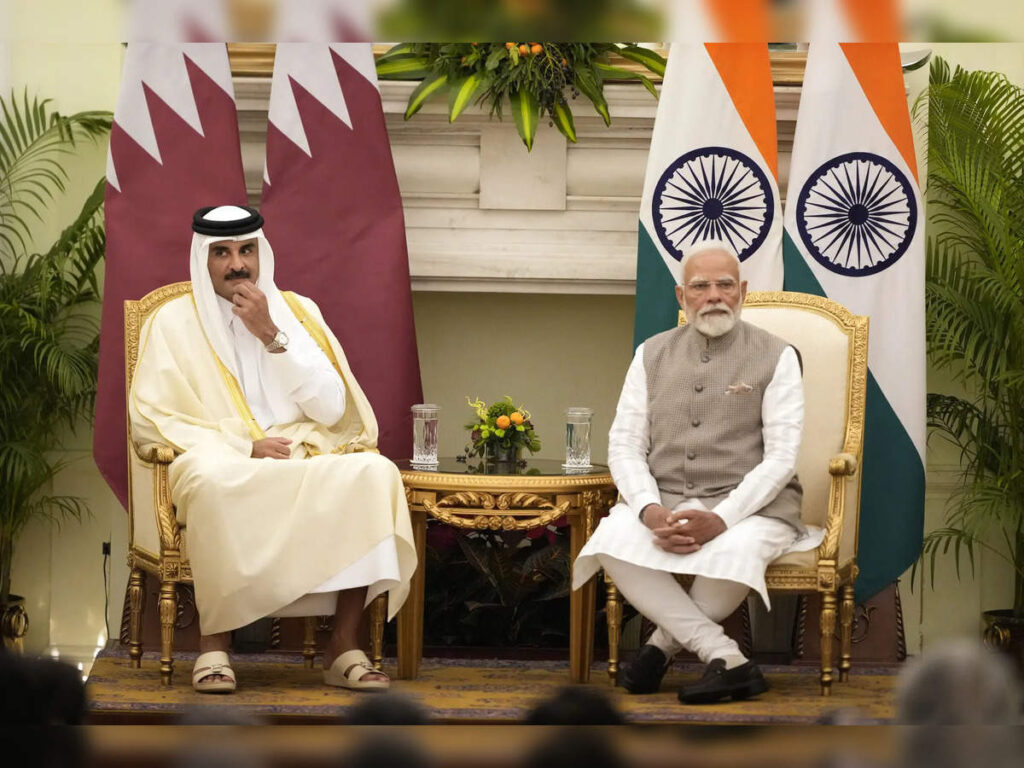NEW DELHI: India should tread cautiously on a potential free trade agreement (FTA) with Qatar, particularly in the petrochemical sector as both countries are strong in this segment, economic think tank GTRI said on Wednesday.
The Global Trade Research Initiative (GTRI) added that India should ensure that tariff concessions on petrochemicals and energy-related imports do not undermine domestic industries. According to a joint statement issued after the meeting of Prime Minister Narendra Modi and Amir of Qatar Sheikh Tamim bin Hamad Al-Thani, the two sides agreed to explore the possibility of entering into a bilateral comprehensive economic partnership agreement (CEPA) with an aim to double bilateral trade to $28 Billion by 2030.
Normally in a CEPA, a kind of free trade agreement (FTA), two trading partners either eliminate or significantly reduce customs duties on the maximum number of goods (90-95 per cent) traded between them.
Besides, they ease norms to promote trade in services and boost investments.
Given the trade structure between the two nations, a trade agreement “must be approached with caution,” the Global Trade Research Initiative (GTRI) Founder Ajay Srivastava said.
India has a well-developed domestic petrochemical industry that could face challenges if tariff reductions lead to an influx of cheaper Qatari imports, he said, adding that India already has a significant trade deficit with Qatar, which could widen further post-trade pact if market access benefits are not balanced.
“A careful evaluation of sectoral impacts, particularly in energy and manufacturing, will be essential before proceeding with such an agreement,” he said.
India’s trade with Qatar is marked by a significant imbalance.
In 2023-24, the country’s imports from Qatar stood at $12.34 Billion, while its exports were only $1.7 Billion.
A large portion (85 per cent) of India’s imports from Qatar comprises LNG ($6.3 Billion), butane, propane mostly for LPG production ($3.1 Billion), and petroleum crude ($1.1 Billion).
Meanwhile, India’s primary exports to Qatar include Basmati rice ($124 Million), articles of iron and steel ($200 Million), and machinery ($106 Million).
According to the GTRI, as of 2024, Qatar has a gross domestic product (GDP) of $221.4 Billion, and a population of about 3.1 Million. India has a GDP of $4 Trillion and a population of 1400 Million. The bilateral trade has declined to $14 Billion in 2023-24 from $18.77 Billion in 2022-23.
India received $1.5 Billion of foreign direct investments from that country between April 2000 and September 2024.
Qatar’s key exports to India include LNG, LPG, chemicals and petrochemicals, plastics, and aluminium articles, while India’s key exports include cereals, copper articles, iron and steel articles, vegetables, fruits, spices, processed food products, electrical and other machinery, plastic products, construction material, textiles and garments, chemicals, precious stones and rubber.
With inputs from PTI




 Congress Accuses Smriti Irani of Ties to Soros
Congress Accuses Smriti Irani of Ties to Soros 